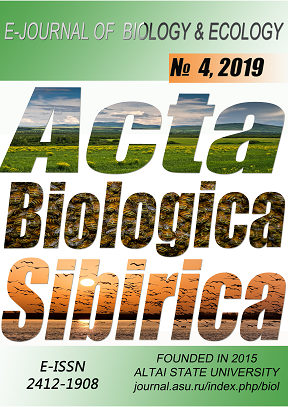Abstract
We provide new data on the distribution of 14 long-legged fly species (Diptera, Brachycera, Dolichopodidae) belonging to 10 genera from the Fars Province, Southern Iran. The genera Diaphorus Meigen, 1824, Dolichopus Latreille, 1796, Hydrophorus Fallén, 1823, and Syntormon Loew, 1857 are recorded in the Fars Province for the first time. Dolichopus lairdi Olejnicek, Mohsen & Ouda, 1995 is newly added to the Iranian insect fauna. Four species, Asyndetus albifrons Loew, 1869, Asyndetus fallahzadehi Grichanov, 2019, Chrysotus suavis Loew, 1857, and Medetera pallipes (Zetterstedt, 1843) were the most abundant in the collected material. Available information on geographical distribution and short taxonomic comments for each species are also included.
References
Ahmadi A, Gheibi M, Ostovan H, Hesami S, Grichanov IYa. 2016. New records of Dolichopodidae (Diptera) from Central Provinces of Iran. Halteres 7: 191-196.
Grichanov IYa. 2007. A checklist and keys to Dolichopodidae (Diptera) of the Caucasus and East Mediterranean. Plant Protection News Supplements. St. Petersburg: VIZR.
Grichanov IY. 2016. Review of predatory flies of the family Dolichopodidae (Diptera) in Iran. Acta Biologica Sibirica 2(4): 11–14. Doi: 10.14258/abs.v2i4.1700
Grichanov IYa. 2017. Alphabetic list of generic and specific names of predatory flies of the epifamily Dolichopodoidae (Diptera). Plant Protection News Supplements 23. St. Petersburg: VIZR.
Grichanov IYa, Ahmadi A, Kosterin OE. 2017. New records of long-legged flies (Diptera, Dolichopodidae) from Central and North-Eastern Iran. Acta Biologica Sibirica 3(4): 99–112. Doi: 10.14258/abs.v3i4.3636
Grichanov IYa, Rezaei S. 2019. A new species of Asyndetus Loew, 1869 from Iran (Diptera: Dolichopodidae). Halteres 10: 35–39.
Khaghaninia S, Gharajedaghi Y, Grichanov IYa. 2014. A contribution to the knowledge of the family Dolichopodidae (Diptera) in East Azerbaijan province of Iran. Check List: The Journal of Biodiversity Data 10(3): 588–593. Doi: 10.15560/10.3.588
Kazerani F, Khaghaninia S, Talebi AA, Grichanov IYa. 2015. Genus Sciapus (Diptera: Dolichopodidae) in Iran, with description of one new species and new records. Acta Entomologica Musei Nationalis Pragae 55(1): 401–409.
Negrobov OP, Selivanova OV, Maslova OO, Chursina MA. 2013. Check-list of predatory flies of the family Dolichopodidae (Diptera) in the fauna of Russia. In: Grichanov IYa, Negrobov OP, editors. Fauna and taxonomy of Dolichopodidae (Diptera). Collection of papers. Plant Protection News Suppl. St. Petersburg: VIZR RAAS, p. 47–93.
Rezaei S, Grichanov IYa, Fallahzadeh M. 2019. First records of long-legged flies (Diptera, Dolichopodidae) from Fars Province of Iran. Acta Biologica Sibirica 5(1): 6-11. Doi: 10.14258/abs.v5.i1.5184
Acta Biologica Sibirica is a golden publisher, as we allow self-archiving, but most importantly we are fully transparent about your rights.
Authors may present and discuss their findings ahead of publication: at biological or scientific conferences, on preprint servers, in public databases, and in blogs, wikis, tweets, and other informal communication channels.
ABS allows authors to deposit manuscripts (currently under review or those for intended submission to ABS) in non-commercial, pre-print servers such as ArXiv.
Authors who publish with this journal agree to the following terms:
- Authors retain copyright and grant the journal right of first publication with the work simultaneously licensed under a Creative Commons Attribution License (CC BY 4.0) that allows others to share the work with an acknowledgement of the work's authorship and initial publication in this journal.
- Authors are able to enter into separate, additional contractual arrangements for the non-exclusive distribution of the journal's published version of the work (e.g., post it to an institutional repository or publish it in a book), with an acknowledgement of its initial publication in this journal.
- Authors are permitted and encouraged to post their work online (e.g., in institutional repositories or on their website) prior to and during the submission process, as it can lead to productive exchanges, as well as earlier and greater citation of published work (See The Effect of Open Access).

